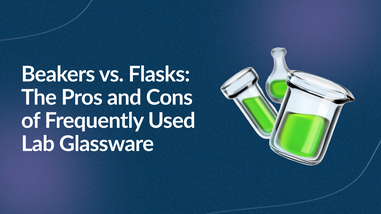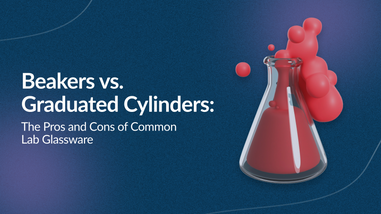- No products in the cart.
No science lab is complete without lab syringe filters. Preventing contamination during testing and analysis is one of the most important processes that take place in a lab since contamination can significantly alter results.
With so many options of lab syringe filters out there on the market, it can be confusing as to which one should be used for what since syringe filters can be used for a variety of applications. The various syringe filters are designed specifically for particular applications. We have put together a guide to help you find the one that’s right for you.
What are Syringe Filters Used For?
A syringe filter, also sometimes known as wheel filters based on their shape, consists of a membrane placed between two halves of a disc with a port that the solution to be filtered flows through. The single-use filter cartridge is attached to the end of the syringe.

The body of the syringe is most often made from material such as nylon and polypropylene. The membrane itself is typically made of nylon or polytetrafluoroethylene (PTFE). Nylon is used often for applications using non sterile syringe filtration while sterile filtration applications also use polyethersulfone (PES) or polyvinylidene fluoride (PVDF).
PES is ideal when fast flux is required to quickly filter volumes. It is also low protein binding meaning that essential culture media aren’t depleted. When it is absolutely critical that the concentration of essential proteins in media is unaffected by the filtration process, PVDF should be used. It results in extremely low protein binding.
Hand-held force is used to move the liquid through the port. The single use device is used to force liquids through the filter either when liquids are delivered or when they are drawn. Syringe filters are used to remove particles or impurities from a sample prior to analysis to prepare solutions for HPLC. They are also used to purify or sterilize media. The cartridges remove particles that would otherwise damage narrow bore equipment.
Are Syringe Filters Reusable?
Syringe filters are single use for convenience, speed, and performance. They are not reusable, since fine particulates are too small to be visible to the naked eye and may cause cross-contamination which in turn will compromise your results.
Different Syringe Filter Types
There are different types of syringe filters. These filters differ in size, porosity, material, and chemical resistance.
Pore Size
The membranes come in a variety or porosites based on the filtration level needed. Porosites refer to the space between the holes. Some common pore sizes include .2 microns, .22 microns, and .45 microns. The .2 microns works well with mycoplasma and other small microbes. This size flows more slowly. Typically, .22 microns is used to sterilize a solution by removing viruses and bacteria and preparing gasses for high-performance liquid chromatography (HPLC). This size will exclude most microbial contaminants except mycoplasma. The .45 microns is used to purify a solution containing a high concentration of particulate matter. This size works well for clarification.
Pore size indicates what size particle can pass through the filter. Filters with the various pore sizes can either clarify solutions by eliminating particulate matter or sterilize by preventing contaminants, fungi, and bacteria. Two different filters can even be layered for clarification and decontamination both at the same time.
Syringe filters also come in different diameters as well. The correct size is determined by the volume of liquid that needs to be filtered. Small volumes typically work well with a diameter of 13 mm. With larger volumes, you will need a 25 mm or 30 mm filter disc.
How to Select the Syringe Filter That's Right For You: Product Selection Guide
1. Evaluate sample:
- Determine chemical compatibility, volume and need for prefiltration
2. Choose filter media type:
- Aqueous: Nylon, MCE, CA
- Non-polar: Nylon, PTFE, PVDF
- Protein: PVDF, PES
3. Determine level of prefiltration necessary:
- In filter unit vs. prefilter unit in series for coarse precipitants.
4. Choose barrel diameter:
- 10 mL: 13 mm diameter
- 100 mL: 25 mm diameter
5. Choose initial or secondary retention target:
- 0.45 µm or 0.20 µm
Where Can I Purchase Lab Syringe Filters?
Lab Pro offers a large variety of chemicals and laboratory supplies. For over 40 years, Lab Pro Inc. has been committed to delivering the highest quality lab syringe filters, microscopes, chemicals, tweezers, hard-wire cutters, lab supplies, and cleanroom PPE apparel to medical device and electronic manufacturing companies and laboratories worldwide. To learn more, visit the biggest Lab Supply showroom in California, or contact us online at 888-452-2776.












































